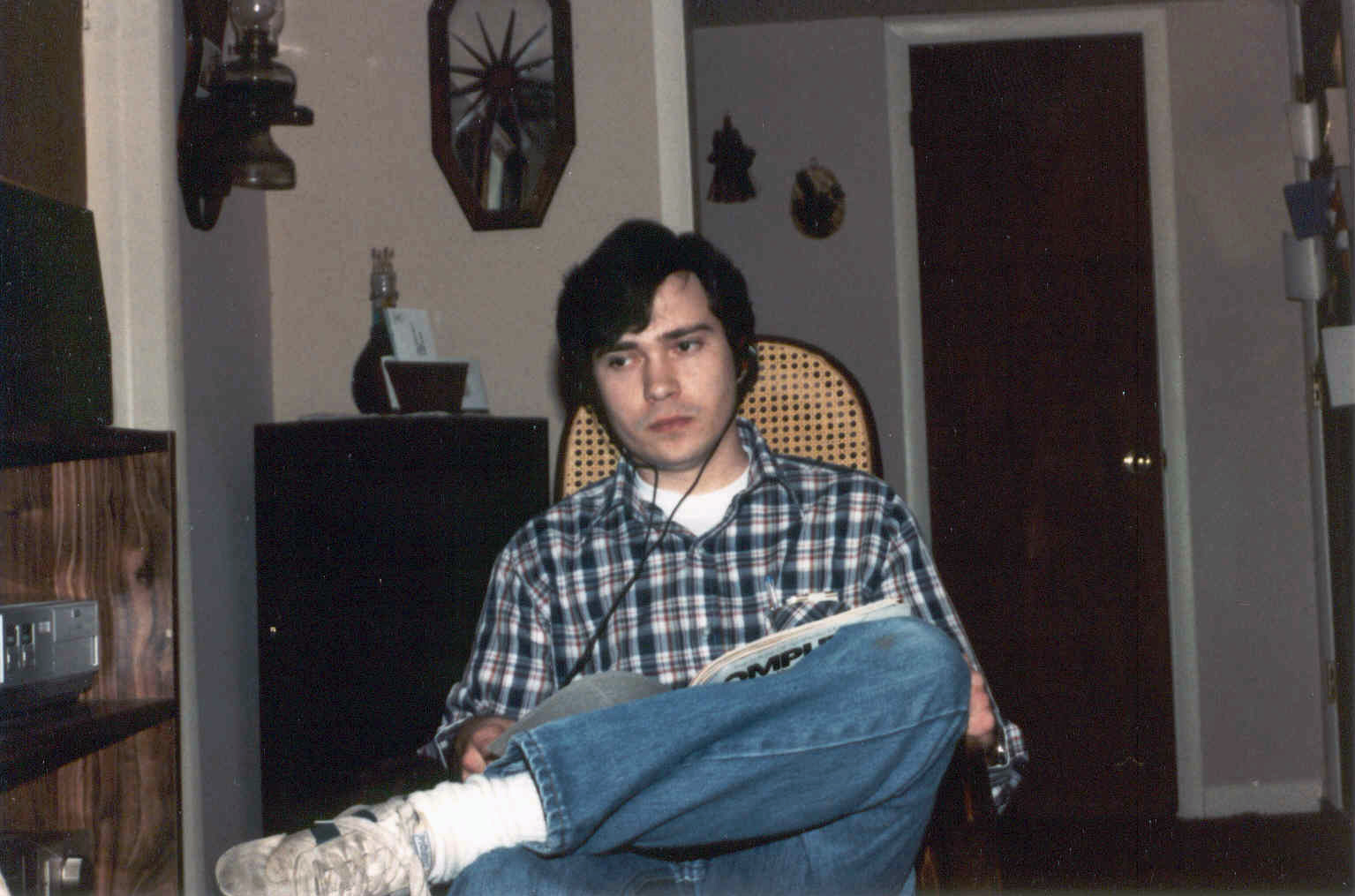
This is the second part of a multi-part series.
Larry Mears prided himself on living in “Rocket City” — Huntsville, Alabama, the home of the Marshall Space Flight Center — but lamented that his high-tech town had no Atari dealers.
Mears was an Atarian from way back. Excited by the promise of home computers, he bought his first 8-bit Atari in October 1981. Later he upgraded to a 16-bit Atari 520ST, the low-cost competitor to the Apple Macintosh, featuring a mouse-driven graphical user interface, and powered by an 8Mhz 68000 processor.
Mears put together a dual-monitor setup for his ST at a time when that wasn’t common, so that he could use all of the ST’s available resolutions: low and medium in color, and high in monochrome. Then he built a floor-to-ceiling workstation in the corner of his den to hold it all.
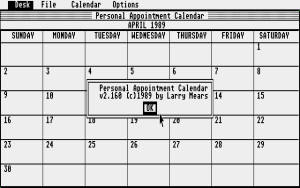
By the late 1980s, he had learned many computer languages — BASIC, Action!, Pascal, C — which he used to create several shareware and freeware projects for the ST.
Faith and family were important to Mears, and those ideas found expression in his programming projects. “The Seeker” was a utility to search for words or phrases in the Bible — a useful tool in those pre-Web days, when the full text of the Bible would have filled at least six double-sided, double-density 3.5″ floppy disks. His “Personal Appointment Calendar,” created at his wife’s request, was for making calendars and keeping track of important dates. PAC was later described by a reviewer as “a real good buy” at just $3 “for those who don’t want to end up in ‘Hot Water’ or the ‘Dog House.’”
A self-described “working man without a degree,” Mears was a shipping clerk for a local bakery, who often downplayed his own coding ability. “I am not an advanced-level programmer,” he once wrote. Still, he enjoyed programming because it exercised his mind. “My job takes care of the old back,” he joked.
Do you enjoy my retrocomputing histories on Break Into Chat? Please join my email list and stay in touch. 📬
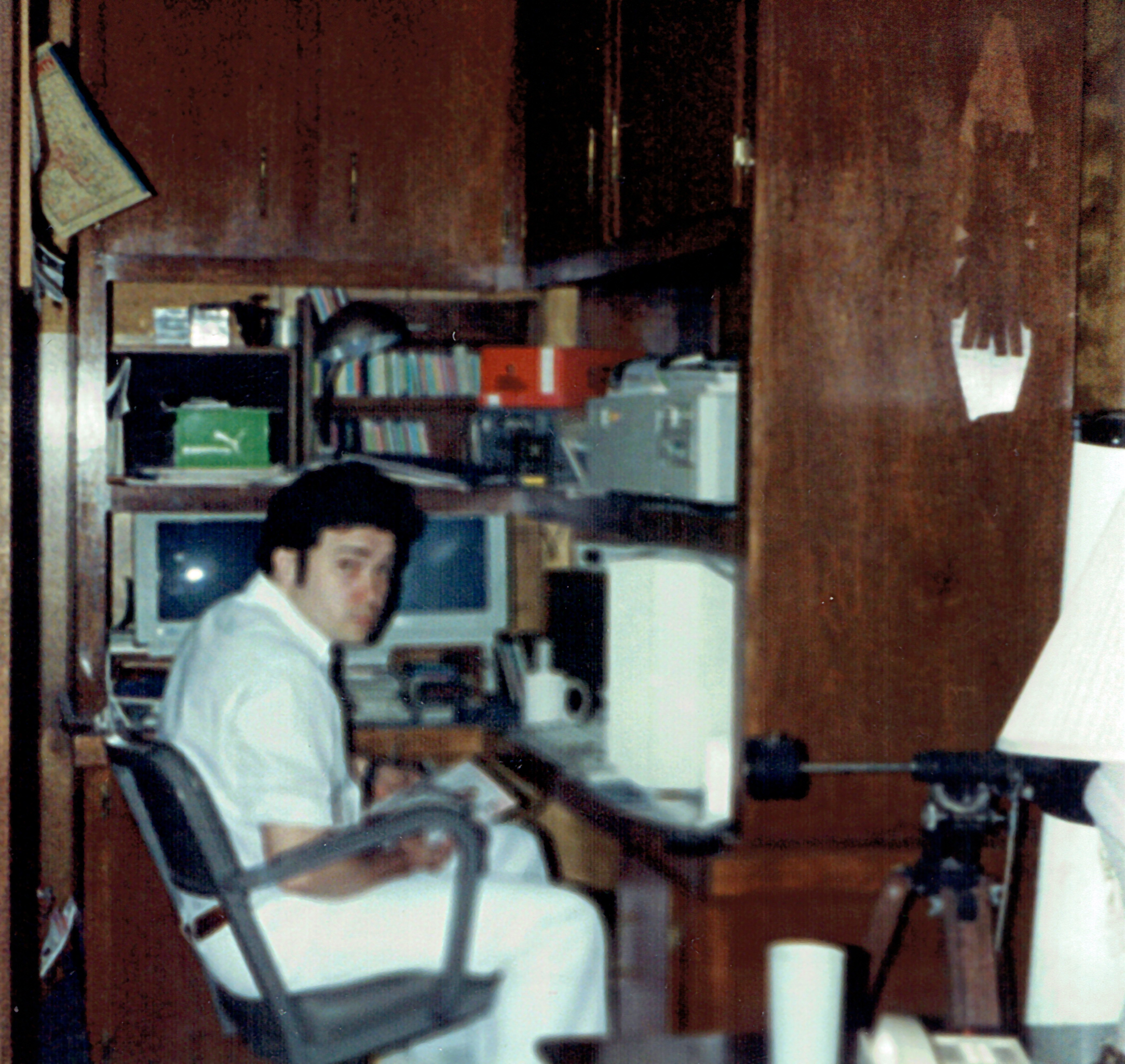
Money was tight. Mears was a father of two and he earned about $20,000 per year, a little over half Alabama’s median household income then. He drove a 1977 AMC Gremlin, a car built by a company that had ceased to exist.
There was very little room in his budget for expensive online services like CompuServe and GEnie. He spent far more time calling bulletin board systems in Huntsville, which were free. He uploaded his software to these BBSes, making it available for others to download and use.
His main haunt online was HAUG BBS, a local board run by sysop Lamarr Kelley. HAUG was part of a national network of Atari BBSes that used FoReM ST software.
A WORLD OF TEXT
From the beginning, bulletin board systems trafficked almost entirely in text.
“The world of telecommunication was a mostly silent world of letters as far as you could see,” noted Steve Turnbull in a retrospective written in 2001.
Some of the earliest sysops and callers owned modems that couldn’t transmit a passage of text much faster than a human would have typed it. In those days, there wasn’t bandwidth for anything beyond the plain, written word.
But time and technology marched on. Modems got faster, and sysops learned how to do more with text.
Each home computer platform had its own character set with extra symbols beyond straightforward alphanumeric characters. Creative people could arrange plain text on the screen to make rudimentary images, remembered today as ASCII art or textmode art.

Most home computers also supported special escape commands to move the cursor, erase characters, or change a character’s color, though these commands varied between platforms. The Atari ST, for example, supported an extended set of VT-52 escape commands. Sending [Esc]-[E] would clear the screen, while [Esc]-[b]-[2] would change the text background color.
Over time, people figured out how to use these escape commands to produce simple animations purely out of text, especially on systems with many semigraphical characters. Examples include ATASCII “break movies” on the Atari 8-bit or “ANSImation” on IBM PC compatibles.
“Star Wrek” is satirical animated text “break movie” made by Tom D’Ambrosio, using the Atari 8-bit computer’s ATASCII character set.
All of this — while fun — fell far, far short of the full graphical capabilities of the 16-bit home computers that had come on the scene in the mid-1980s. The constraints of BBS technology soon became a source of frustration for some users and sysops.
Mears was one of those. In 1986, he decided he was fed up with the “bland VT-52 colors” offered by the ST bulletin boards he was calling.
He wanted a richer BBS experience.
GRABBING ATTENTION
Mears wasn’t alone. Programmers on other computer platforms also wanted to add real graphics to BBSes. Michael Cox, for example, would develop a graphics protocol for the Commodore Amiga called SkyPix, along with an editor called SkyPaint. (Like “Instant Graphics!”, it eventually debuted in 1988.)
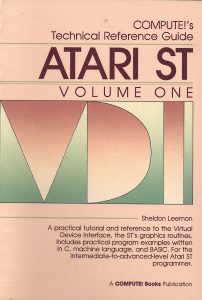
Mears knew the Atari ST’s “virtual device interface,” or VDI, had routines to draw graphics primitives, like lines, rectangles, and circles. He wanted to find a way to augment a standard Atari ST terminal to respond to additional command sequences and invoke these VDI functions.
Most BBSers were familiar with the Hayes AT command set for controlling modems. Each Hayes command was prefixed with AT, short for “attention.” When the modem was in command mode and saw the AT prefix, it knew the subsequent characters would define an instruction to execute. The command ATDT999-9999, for example, told a modem to dial the phone number 999-9999 using touch-tone.
Mears adopted a similar syntax as he designed his own command sets.
His first attempt was implemented in a 1986 comm program he called “GTerminal.” For GTerm, he chose the prefix GT: as his equivalent of AT — a sequence to grab the attention of the terminal program. When Mears developed GTerminal’s successor, “Instant Graphics!”, in 1988, he changed the prefix to G#.
In 1990, two years after Larry Mears first released “Instant Graphics!”, Steve Turnbull created this humorous interactive tutorial explaining how to optimize sequences of IG commands so that animations would load and display faster.
In both GTerminal and IG, the commands consisted of a single character followed by a comma-delimited list of parameters. For example, in the IG command string G#L>206,35,225,44:, the L was an instruction to draw a line, and the following numbers defined the coordinates of the line’s start and end points: (206,35) and (225,44).
Many of the commands he implemented in his protocols were just wrappers around VDI function calls for drawing lines or circles, choosing fill patterns, or changing font size or effects. But, as we’ll see in future posts, he later added more complex commands to IG, like support for clickable “mouse zones”, blitting areas of the screen to memory, playing music, or looping a series of commands.
IG IS BORN
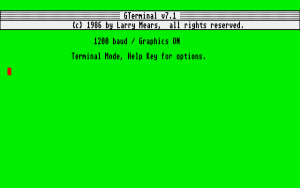
Mears’ early GTerminal was pretty bare-bones in comparison with other more polished terminal programs. Its main attraction was support for this special graphical command set. Mears uploaded it to local BBSes, and even tried to make a version for the 8-bit Atari computers.
But GTerminal failed to gain traction.
So, in 1988, Mears decided to try a different approach.
As he began work on “Instant Graphics!”, he chose not to build a full terminal program again. He now knew from experience he couldn’t make one that people would prefer over Flash or Interlink, the most popular terminals for the Atari ST at that time.
Instead, IG would be only an interpeter of his graphics protocol, running as a “desk accessory” — a special type of Atari ST program that loaded on startup and remained in memory. Desk accessories could be opened from the menu bar while another application was running. So a user could fire up their favorite GEM-based terminal and still run IG while using it.
Perhaps as early as summer 1988, Mears was ready to share IG with the world. He uploaded the first versions of “Instant Graphics!” to HAUG BBS as freeware for other users to download. Then he posted public messages with short plain-text IG sequences to demonstrate the new technology.
Created in 1988, “WINK.IG” is one of Larry Mears’ earliest demonstrations of his “Instant Graphics!” protocol.
Mears wasn’t an artist, so these first demos were very simple. A winking smiley-face animation. A rocket ship on an asteroid.
You can feel his impatience in the text of some of them: “Well, has anybody even tried playing around with the Instant Graphics ACC?”
He had built a robust protocol. Now he was eager for the Atari ST BBSing community to embrace it and begin making cool stuff.
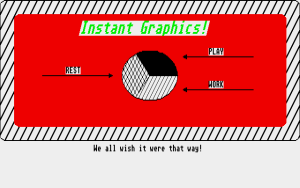
He hoped that people would create online comic strips or graphical BBS door games. He wanted to see the publishers of plain-text online magazines like “ST Report” or “ZMagazine” embed charts and illustrations in each issue.
“IG with a little help from the users out there could open a new door for telecommunications,” he wrote.
There was so much possibility. He just needed some visionaries to see IG’s potential and run with it.
A SLOW START
Like many creators who have tried to get a critical mass of people to adopt new technology, Mears faced a chicken-and-egg dilemma when he released the “Instant Graphics!” desk accessory in 1988:
Why would anyone install it if there were no BBSes customized with IGS art?
But if no callers were using IG, why would any sysop bother trying to create art with it?
Exacerbating this dilemma, Mears had not developed an editor for drawing IG art. Unlike Michael Cox, who shipped his Amiga graphics protocol SkyPix with a utility called SkyPaint, Mears expected people to learn to write IG commands by hand in a text editor.
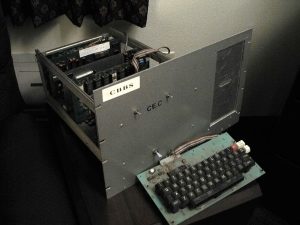
This omission was certainly an obstacle to IG’s adoption, but it wasn’t a totally unreasonable expectation on Mears’ part. After all, bulletin board systems were born of a “do-it-yourself” ethos, exemplified by Ward Christensen and Randy Suess, who created the world’s first BBS, CBBS, in 1978. Sysops often had to wrangle complicated configuration files or write code in arcane scripting languages in order to customize their boards.
Still, with these hurdles, IG got off to a slow start, a repeat of Mears’ earlier experience with GTerminal.
“I got a little discouraged over time,” Mears told me. Because it appeared that IG wasn’t going to do much, he released the source code “into the great wide open to see what would happen.”
He pivoted to other projects, spending much of 1989 working on his “Personal Appointment Calendar” utility and a Bible study program called “The Seeker”.
Unbeknownst to him, two early adopters a few hundred miles away were about to take his IG source code and topple the barriers to entry.
Up next — Part 3: The adventure begins
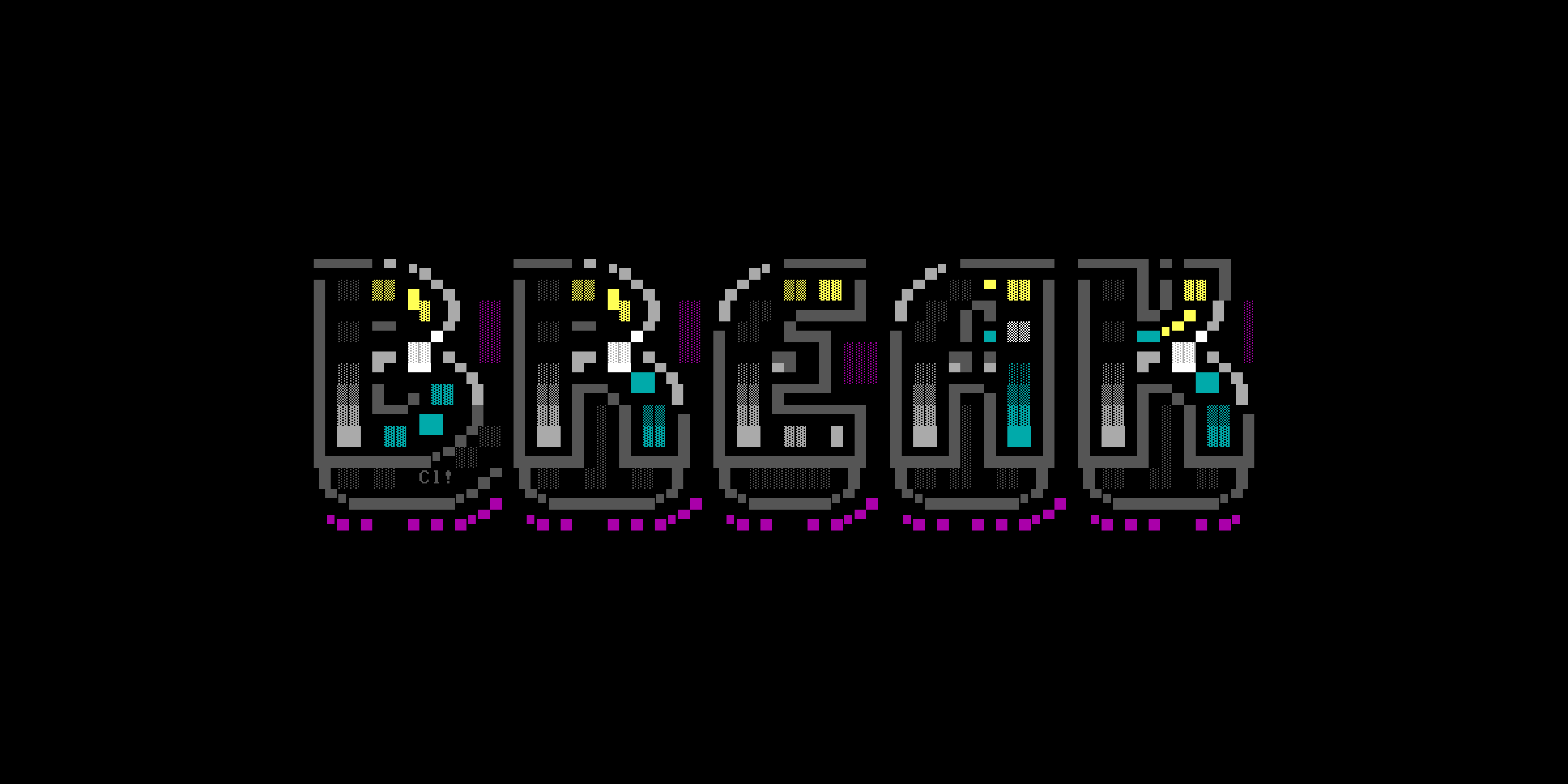
Share your thoughts!